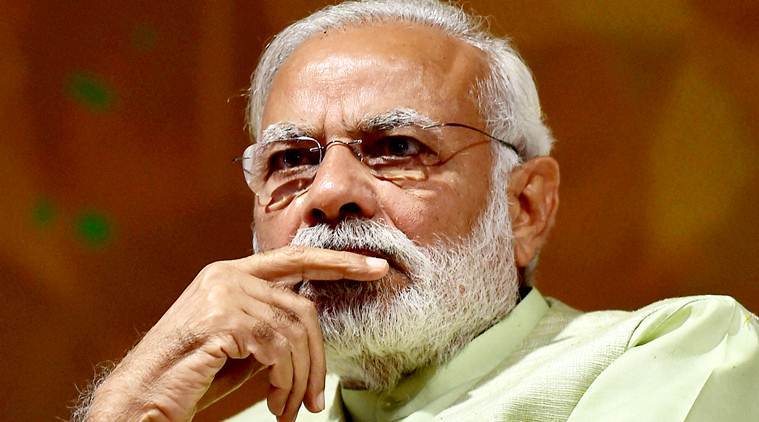 Prime Minister Narendra Modi. (File Photo)
Prime Minister Narendra Modi. (File Photo)
Prime Minister Narendra Modi’s address to the nation understandably made the news for the economic package and reforms. But, there was also an important reference, which not many would have noticed but is nonetheless vital to understanding how the times ahead will play out. I am talking about Modi’s mentioning of Kutch post the 2001 quake.
We all know the trail of devastation the people of Kutch witnessed after that fateful morning of January 26, 2001. The regional, national and international media had written obituaries of the region, which was also amongst the most backward in Gujarat. However, the next decade became Kutch’s decade of progress, and not decay. The reason behind this was the unique approach of then Chief Minister Modi.
When the earthquake struck Kutch, while everyone was rushing as far away as possible from the region, one man was desperate to head to ground zero — to be among the people and help. It was Modi, then a general secretary of the BJP. Later that year, when he took over as chief minister, the top priority was rebuilding Kutch and streamlining the rescue operations. New chief ministers usually have a “honeymoon period” but destiny had different plans for Modi.
How did Modi do it? The answer lies is a multi-pronged approach but, most importantly, by thinking out of the box, empowering and assisting the local communities.
A key challenge was the lack of houses. Village after village, town after town, one could only see destroyed houses. There was a severe shortage of masons as well. The Gujarat government acted swiftly and integrated the local communities, made small teams, gave each team kits and focussed on building homes. Gradually, brick by brick, the housing challenge was overcome. The number of houses increased — the houses were bigger than earlier, and they were also built as per local requirements.
Compare this to the handling of the post-earthquake scenario in Latur where, even years after the earthquake, housing was inadequate and there were deficiencies in the toilet construction programme.
The other subject Modi stressed on was the building of schools. He said, come what may, we need the schooling infrastructure back on track. Generations had left the people of Kutch to their fate. This was a district known for its desert and the border with Pakistan (Registan and Pakistan). Post the earthquake, Modi was determined to change this perception of Kutch. During one of his earlier visits to the region, as CM, Modi had said that he wanted to change this narrative of linking Kutch with Pakistan.
Modi had then reimagined the agriculture sector in Kutch. In the years after the earthquake, Kutch began to export mangoes, dates and pomegranates. An elaborate irrigation network was set up and, gradually, water from the Narmada reached the region.
Back in the day, it was tough to convince anybody to visit Kutch. “What is there to see?”, people would ask. Then came the Rann Utsav, which showcased the culture, traditions and cuisine of Kutch. A boost was given to the local handicraft industry as well. This contributed to an economic resurgence. Dairy and cooperatives, which were the bastion of a select few, came to Kutch in a big way. The basic constraints of roads, railways and highway infrastructure were corrected and overcome at a record pace.
Nobody had imagined that in less than a decade, Kutch would make its way to being one of India’s most prosperous and progressive districts.
It was Modi who, through his work in Kutch, reimagined India’s disaster management apparatus. He set the processes that made it easier for governments to cope with disasters. Before the Kutch earthquake, disaster management was a subject usually with the agriculture department — because our definition of disasters never went beyond floods and droughts. In 2003, the Gujarat Assembly passed the Gujarat State Disaster Management Act, thus becoming the first state to have a legal and regulatory framework for disaster management. It was now the home ministry that would have control over disaster management considering the several nuances involved in coping with disasters. The UPA government replicated this and passed the Disaster Management Act, 2005. This Act, like in Gujarat, set up provisions to create the NDMA.
Recently, when Modi highlighted the need to reimagine how we look at the health, education and tourism sectors in the post-COVID era, it reminded me of his work in Kutch. What is being planned are long-term measures, not aimed at merely fixing the damage, but future-proofing the nation against similar challenges.
Modi’s Kutch experience is relevant today because it instils hope — that even the most disastrous of situations can lead to promising opportunities with the right kind of leadership. It also gives a peek into how Modi can provide statesmanship in the time of crises. He rises above short-term considerations of rebuilding. He does not merely repair, he reignites the development trajectory through active community participation. He did it in Kutch, and he will surely do it now.
This article was published in the Indian Express Print by the title “Lessons from Kutch”. The writer is former vice-chancellor, Krantiguru Shyamji Krishna Verma Kachchh University